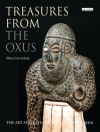The world of work is tightly entwined with the world of things. Hot metal illuminates connections between design, material culture and labour between the 1960s and the 1980s, when the traditional crafts of hot-metal typesetting and letterpress were finally made obsolete with the introduction of computerised technologies. This multidisciplinary history provides an evocative rendering of design culture by exploring an intriguing case: a doggedly traditional Government Printing Office in Australia. It explores the struggles experienced by printers as they engaged in technological retraining, shortly before facing factory closure.
Topics explored include spatial memory within oral history, gender-labour tensions, the rise of neoliberalism and the secret making of objects ‚on the side‘. This book will appeal to researchers in design and social history, labour history, material culture and gender studies. It is an accessible, richly argued text that will benefit students seeking to learn about the nature and erosion of blue-collar work and the history of printing as a craft.
Inhaltsverzeichnis
1. Introduction: labour, design and culture
Part I: Image, space, voice
2. The visual at work: oral history and institutional photographs
3. Spatial and architectural memory in oral histories of working life
Part II: Technological transitions
4. The continuity of craft masculinities: from letterpress to offset-lithography
5. ‚Going with the technology‘: the final generation of hot-metal compositors
Part III: Challenges and creative resilience
6. (Re)making spaces and ‚working out ways‘: women in the printing industry
7. Making things on the side: creativity at a time of institutional decline
8. Conclusion: factory closures, material culture and loss
Index
Über den Autor
Dr Jesse Adams Stein is Chancellor’s Research Fellow in the School of Design at the University of Technology, Sydney












